You’re walking along the edge of a glacier, four people tied together along a rope and all of a sudden your end tightens up, you can feel tension on the line, and you start to slide. You’re not sure what is happening but your first instinct is to fall down, dig your feet and ice ax in and stop from sliding further than you already have. Once you get stopped, and everything appears to be stable, you look around and check your teammates. You only see two of them, and there are supposed to be three. Someone is missing!
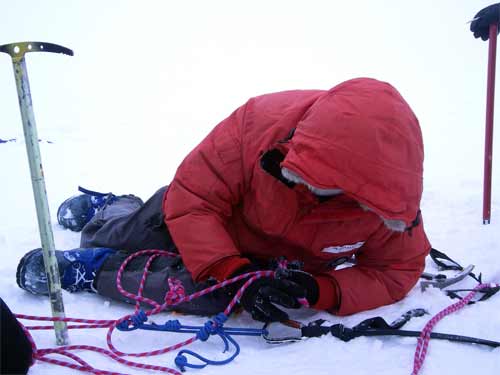 Rescue
Rescue
Don moving his harness to the anchor line. This helps to prevent him from being pulled into the crevasse.
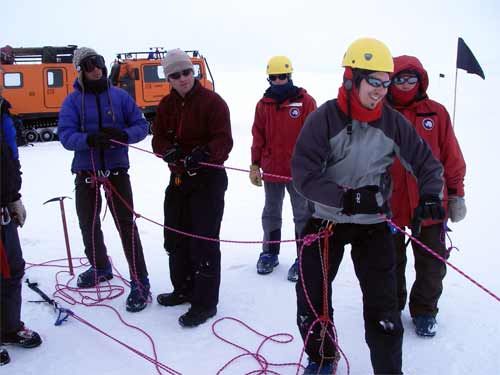 Someone has fallen into a crevasse! Making the rescue!
Someone has fallen into a crevasse! Making the rescue!
This is just an example of one of the scenarios we were put in during our day-long crevasse training yesterday. It started very basic in learning how to tie some knots. This turned out to be more than basic. If one of your knots isn’t tied right and the above scenario does happen, someone isn’t going to be coming back from the hole they fell in. Once we got into the field, the first thing we had to learn how to do was fastening the harness and then attach ourselves to the guide rope. The team is groups of four, tied into the rope for safety in traveling along a glacier or other areas that may be heavily crevassed.
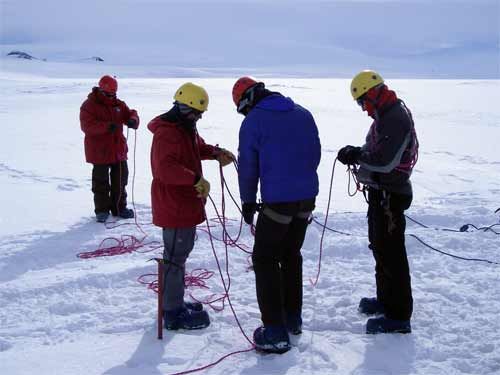
The next step was to get yourself out of a crevasse if you weren’t injured and were able to keep your lines attached. This was probably the most fun, scaling an ice wall! It would also be very handy to help yourself out if you were in a bad situation. An anchor would be tied at the top of the crevasse to hold your weight as you started to climb out.
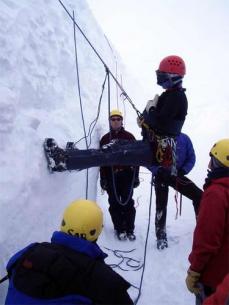
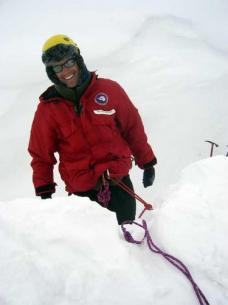 Climbing out of the creavasse (left: the instructor, right: gillette)
Climbing out of the creavasse (left: the instructor, right: gillette)
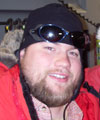 Luke
Luke
BIO: Luke Zoet
Luke is a 3rd year graduate student at Penn State (PSU), and is studying glacial seismicity using the Transantarctic Mountain Range Seismic Study (TAMSEIS) data set. This trip to Antarctica his my second; the first trip was to an area called Siple Dome across the Ross Ice Shelf from McMurdo. Luke came to PSU from Michigan State University (MSU) work on a Master’s degree which he is currently finishing up, and then will be continuing on to a PhD also, at PSU. Luke started at MSU and was trying to find a major that would combine outdoor activities with math and science. Geology and Geophysics are a perfect blend of the subjects he liked in school and his personal interests, and would allow him to travel to interesting places to study. After completion of a Bachelor’s degree at MSU Luke had to select what type of Geology / Geophysics he would like to focus on in graduate school. Luke had taken a class at MSU in Glacial Geology and found it very interesting. He had always liked climbing around in the snow that piled up and the frozen lakes in Michigan in the winter time, so an advisor at MSU recommended looking into Glaciology. After further consideration, Luke found Glaciology a very interesting field to study and decided that was right for him. This is what has brought Luke to PSU and on to Antarctica.

